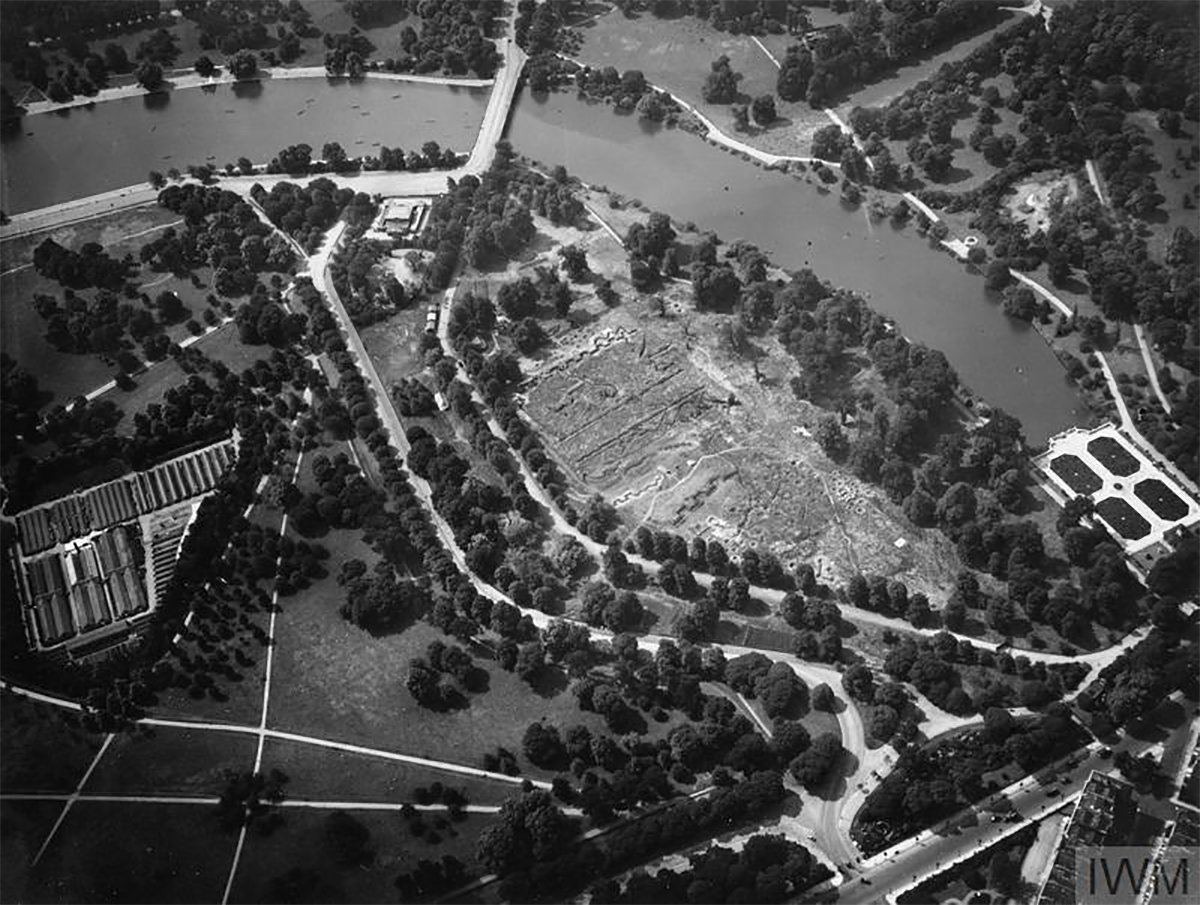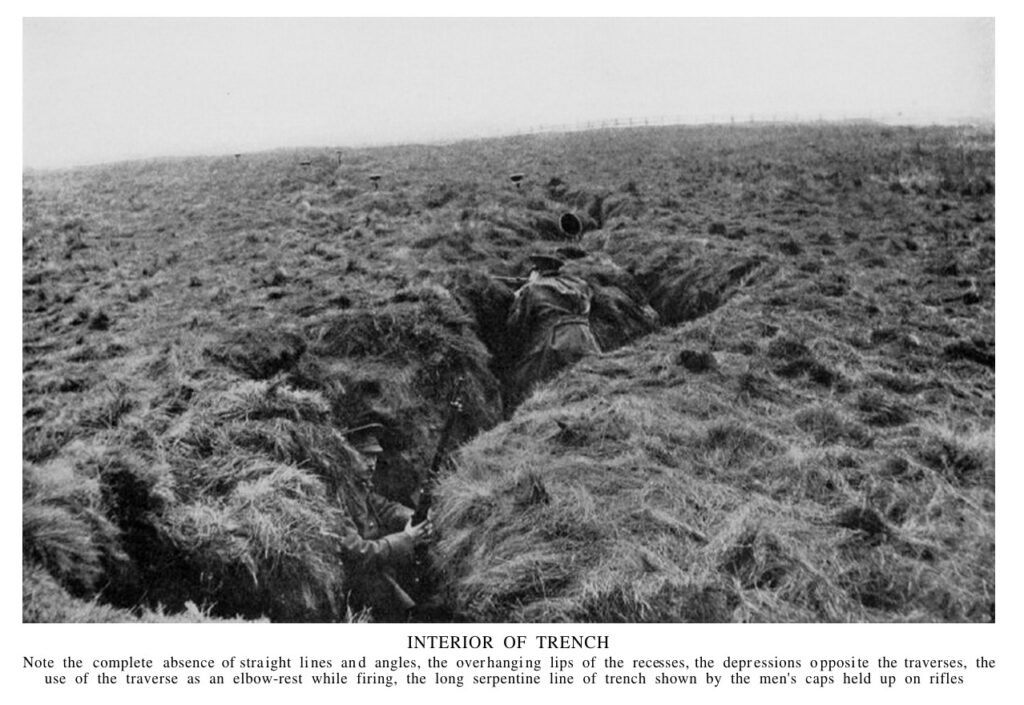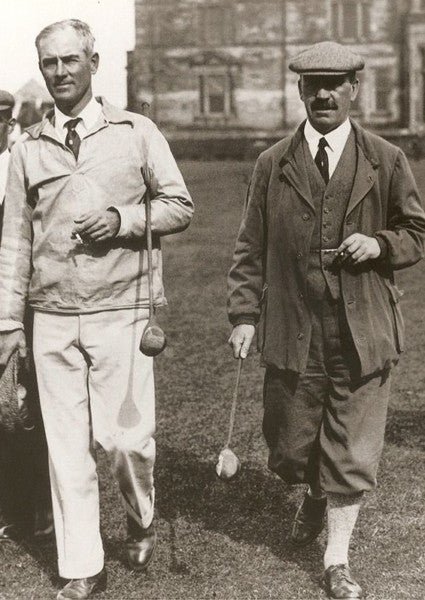The Course Doctor: From Camouflaging World War I Trenches to Designing Augusta National Golf Club

THE BRITISH ARMY SCHOOL OF CAMOUFLAGE 1917 – 1918 (Q 95935) Aerial photograph of the Camouflage School in Kensington Gardens, Central London. Picture also shows the Serpentine, and in the bottom right hand corner the Bayswater Road. Copyright: © IWM. Original Source: http://www.iwm.org.uk/collections/item/object/205183631 © IWM Q 95935
The Masters is one of the most celebrated sporting events in the world. Golfers, caddies, sports broadcasters, and spectators all converge on Augusta National Golf Club, the historic golf course in Georgia that hosts one of the four major PGA Tour Championships. The Tournament is held annually in April, except in exigent circumstances such as its cancellation during the four-year period of World War II and its postponement during the COVID-19 pandemic.
For nearly a century, the biggest names in golf — including Arnold Palmer, Jack Nicklaus, and Tiger Woods — have had the honor of participating in some of the founding and adopted traditions, such as the donning of the infamous green jackets, which originated to identify the members of the club.
“To me, the Augusta National course has character, individuality, and personality,” said Horton Smith, one of the first adopters of the sand wedge golf club. “It is one of the few courses that really presents two games on most every hole — a game to reach the greens and another to figure the ever challenging contours after reaching the greens.”

However, these challenges were not scripted by randomly throwing out ideas of having a water hazard here or a bunker there. The careful creation of the Augusta National was envisioned by Alister MacKenzie, one of the most treasured golf course architects in history, and Bobby Jones, a Grand Slam golfer who later became a World War II veteran.
MacKenzie’s background was initially in medicine, having earned a degree from Cambridge University, and he practiced as a surgeon. That soon translated into service as a civilian doctor in the British Army during the Second Boer War where he was exposed to how the Boers used camouflage to confuse the British.
MacKenzie was an avid golfer and had designed his first golf course called the Alwoodley Golf Club in England in 1907. His experience in Africa and his label as an “expert golf architect” thrusted MacKenzie into action to propose how the Royal Engineers could use his maverick ideas. He entrusted the use of the Golf Greenkeepers Association to build trenches based on how hazards are built on golf courses to conceal their emplacements.

“Allow me at my own expense to give demonstrations in new methods of concealing men, gun positions, and fortifications,” MacKenzie contacted the British War Office in the Autumn of 1914. The callous and by-the-book response was that the engineers had already undergone significant concealment training. “The whole secret of making invisible trenches,” MacKenzie stressed, “is in the construction of undulations which cannot be distinguished from nature itself.”
It took some convincing, especially considering that the first dedicated camouflage unit, which honored the idea “to make up for the stage,” originated with the French in 1915. MacKenzie was an early voice in recognizing the importance of camouflage in earthwork structures and modifying defenses along the front. The French used camouflage strictly for vehicles and weapons.
His reputation as “The Course Doctor” coupled with his newfound passion as a camoufleur led to his transfer to teach the art of camouflage at the Army Camouflage School in London.
Following his wartime service, MacKenzie walked away from his medical practice to pursue his mastery of the links. His works includes Cypress Point Club in Monetary, California, known for its gorgeous par-3 16th-hole, which is considered the most photogenic hole in the world. MacKenzie also enshrined legendary courses such as Pasatiempo Golf Club in Santa Cruz, California, Crystal Downs Country Club in Michigan, and the Royal Melbourne Golf Club in Australia. Three of the more than 100 courses he designed are recognized in the top 10 golf courses in the world.
“He loved to test his mind,” said Greg Norman at the 2005 World Golf Hall of Fame induction. “He understood the weather conditions, he understood the environmental changes, he understood every blade of grass.”
The medical practitioner turned generational forerunner to golf architecture remained an honest believer of the health benefits of golf until he died in 1934, just a few months shy of the first ever Masters Tournament, which he helped bring to fruition.

Matt Fratus is a history staff writer for Coffee or Die. He prides himself on uncovering the most fascinating tales of history by sharing them through any means of engaging storytelling. He writes for his micro-blog @LateNightHistory on Instagram, where he shares the story behind the image. He is also the host of the Late Night History podcast. When not writing about history, Matt enjoys volunteering for One More Wave and rooting for Boston sports teams.
BRCC and Bad Moon Print Press team up for an exclusive, limited-edition T-shirt design!
BRCC partners with Team Room Design for an exclusive T-shirt release!
Thirty Seconds Out has partnered with BRCC for an exclusive shirt design invoking the God of Winter.
Lucas O'Hara of Grizzly Forge has teamed up with BRCC for a badass, exclusive Shirt Club T-shirt design featuring his most popular knife and tiomahawk.
Coffee or Die sits down with one of the graphic designers behind Black Rifle Coffee's signature look and vibe.
Biden will award the Medal of Honor to a Vietnam War Army helicopter pilot who risked his life to save a reconnaissance team from almost certain death.
Ever wonder how much Jack Mandaville would f*ck sh*t up if he went back in time? The American Revolution didn't even see him coming.
A nearly 200-year-old West Point time capsule that at first appeared to yield little more than dust contains hidden treasure, the US Military Academy said.












